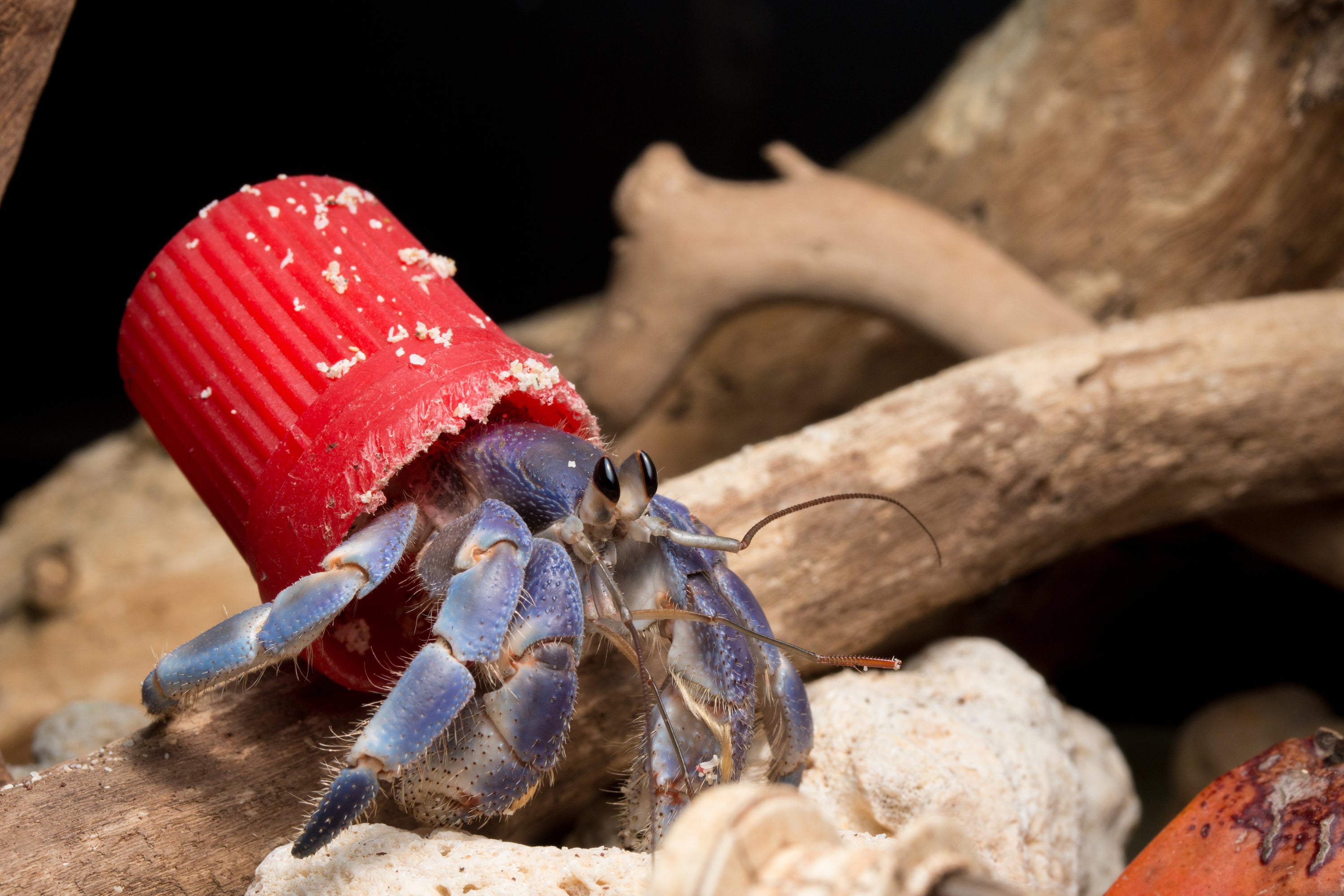Pictures reveal hermit crabs are turning to plastic waste to use as shells
Scientists from University of Warsaw and Poznań University said this emphasises impacts of plastic pollution on a massive scale

Shocking pictures have revealed Hermit crabs are increasingly turning to plastic waste as armour for their bodies amid record levels of pollution in the world’s oceans.
The findings are based on analysis of photos taken by wildlife enthusiasts and the discovery have been published as part of a study in the journal Science of the Total Environment.
Marta Szulkin, Zuzanna Jagiello and Łukasz Dylewski searched the internet for pictures of Hermit crabs and found 386 instances of the crustaceans using artificial shells - mainly plastic caps.
They also found the crabs using broken necks of glass bottles or metal ends of light bulbs as shells.
The researchers estimate ten out of 16 species of land hermit crabs around the world have begun to use plastic as a form of armour.
The scientists from the University of Warsaw and Poznań University in Poland said this emphasises the impacts of plastic pollution on a massive scale.
Plastics are the most common waste found in seawater and numerous studies indicate that they have a very harmful effect on wildlife and the environment.
Every year 19-23 million tonnes of plastic waste leaks into aquatic ecosystems, polluting lakes, rivers and seas, according to the United Nations Environment Programme.
A recent study also found more than 171 trillion pieces of plastic are now estimated to be floating in the world’s oceans.
Surfers Against Sewage (SaS) told The Independent the findings of this new study are “beyond terrifying”.
“Choking our rivers and seas, plastic leaches into every corner of the environment,” a spokesperson for SaS added.
The authors of the new study said plastic waste can significantly alter the natural behaviour of animals.
“‘Hermit crabs need to protect their soft abdomen. They usually do this by hiding in shells left behind by dead crustaceans. One such hiding place is not enough for a lifetime because of the crab’s development, but also because of intra-species competition,” they added.
The study authors add that instead of shells, these creatures started using plastic objects lying on beaches and in the water.
The researchers confirmed the emergence of a new behaviour in hermit crabs using an iEcology method - reffering to the use of various online data sources as a tool in ecological research.
“In the photographs, we discovered a total of 386 individuals using artificial shells - mainly plastic caps, but also made from broken necks of glass bottles or metal ends of light bulbs.
“According to our calculations, ten out of sixteen species of land hermit crabs in the world use this type of shelter. This unusual behaviour is observed in all tropical regions of the Earth,” the scientists wrote.
The researchers aim to further understand the reasons for this behaviour and its impact on the evolution of hermit crabs.
“These analyses will deepen our understanding of the consequences of plastic pollution in marine ecosystems, as well as the evolution of species in the context of new evolutionary pressures associated with the Anthropocene,” they wrote.
Dr David Santillo, Senior Scientist for Greenpeace International’s Science Unit, told The Independent: “We have now produced and disposed of so much plastic waste that it has sadly become a component part of almost every ecosystem.
“What the hermit crabs are doing, in selecting plastic and other litter over natural materials, should serve as a very visual warning of what is a much wider but often less visible problem of our own creation.
“When plastic bottle tops become too eroded to function as shells for hermit crabs, the microplastics they disintegrate into may cause problems for other species, entering the diets of corals and other small organisms, providing no nutritional value and potentially transporting toxic pollutants around the seas.”
Jade Chapman, spokesperson for Surfers Against Sewage said: “The planet’s wildlife is no stranger to plastic pollution and it’s beyond terrifying. Choking our rivers and seas, plastic leaches into every corner of the environment.
“Enough is enough. We need to ban single-use plastic and push for the reuse and recycling of products we already have. To give our environment a chance, we must progress the Global Plastics Treaty, and stop the dithering on a UK-wide Deposit Return Scheme.”
Subscribe to Independent Premium to bookmark this article
Want to bookmark your favourite articles and stories to read or reference later? Start your Independent Premium subscription today.

Join our commenting forum
Join thought-provoking conversations, follow other Independent readers and see their replies